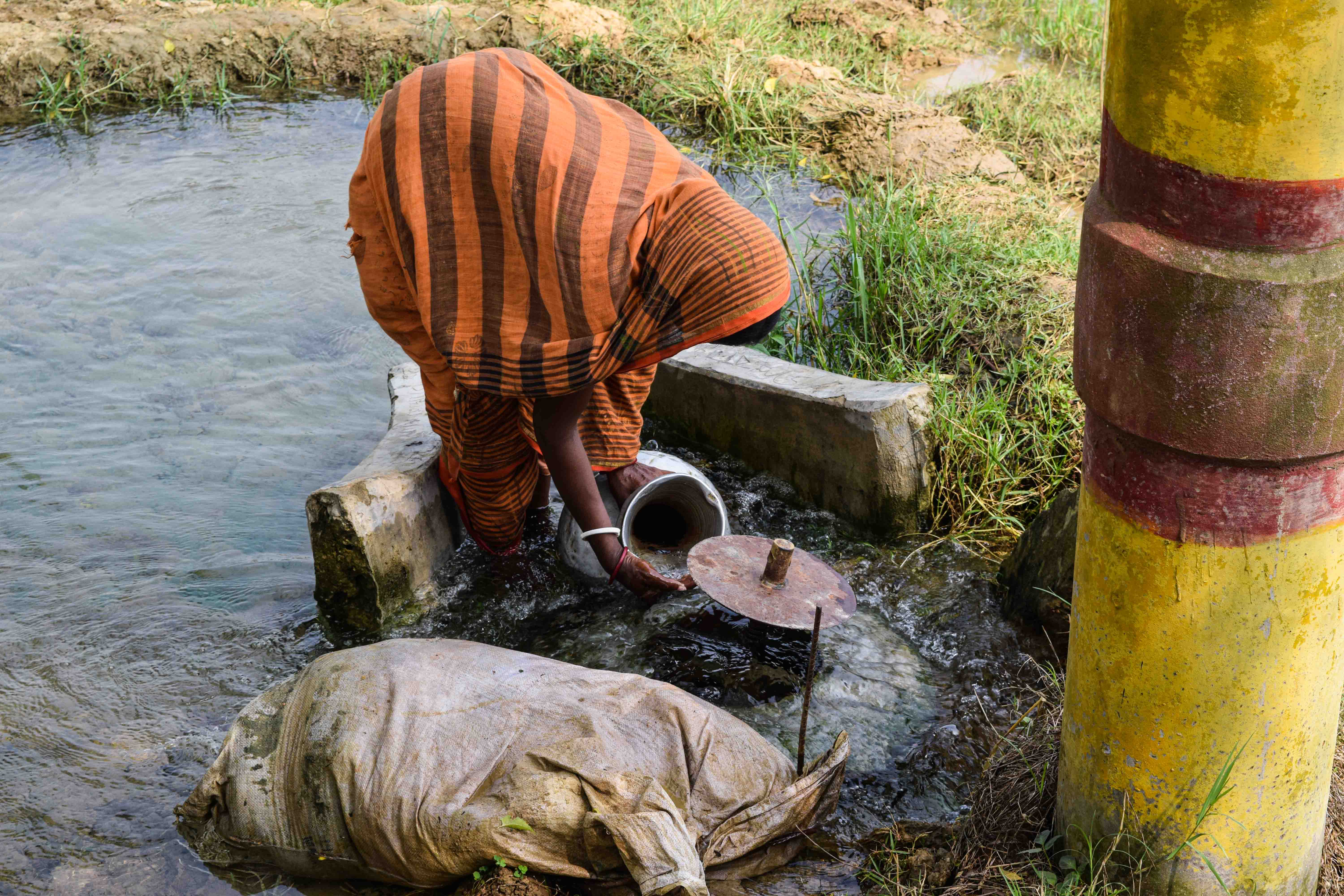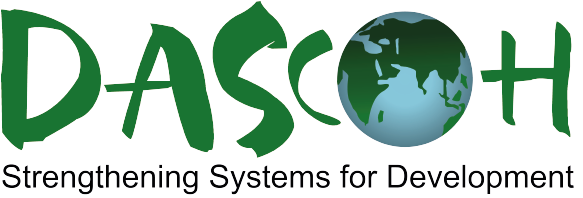
Goal: The enabling framework of Bangladesh water rules and guidelines support competent sub-national institutions to increase the availability of water for disadvantaged people in the Barind area through sustainable, effective, inclusive management and use of water resources
Outcome 1: Citizens’ and LGIs effectively participate in IWRM processes to ensure increased availability of water
Citizens and LGIs, in coordination with other stakeholders in the region, ensure effective access to water through participatory IWRM processes. In addition to the success of the first phase of awareness raising, various IWRM initiatives have generated experience and technology which has led to investment in such IWRM initiatives to intensify their effectiveness in the second phase which promises higher returns not only on water use efficiency but also to protect availability. It inevitably relies on partner UPs to allocate funds dedicated to the implementation of the IWRM plans, which is instead supported by a budgeted water plan built by the newly established multi-stakeholder water management platform.
The targets of Outcome 1 are:
- *** 95% disadvantaged people accessing domestic water as per Rights; and
- *** At least 76% LGI allocating funds to implement IWRM plans;
Outcome 2: Functional decentralized IWRM committees address regional water resource issues
The water rules (BWR) confer decentralized IWRM Committees with the responsibility of implementing the regulatory framework so that grassroots organizations and sub-national LGIs ranging from unions to districts can find and implement wide-ranging solutions to the water resources issues of the Barind area. As a result, the project supports forming and trains IWRM committees in their functions. WARPO, through its decentralised divisional office and professional staff, will continuously monitor the compliance of their committees with the prescribed terms of reference. WARPO is expected to replicate the practice of new functioning IWRM committees to at least one district in each division in the other two divisions. WARPO will also monitor the new projects of various ministries to evaluate their compliance with the water rules.
The Outcome has to achieve the following targets
*** At least 76% IWRM committees comply with their ToRs
*** WARPO Divisional (Barind) Office in Rajshahi is functional, with ≥2 professional staff plus support staff permanently stationed in Rajshahi;
*** WARPO replicates experience of Rajshahi Barind in at least one district of two other divisions; and
*** At least one new project is planned by ministries considering BWR and IWRM.
Outcome 3: Improved policy framework supports information flow and participatory water resource planning.
The project recognizes that enforcing the water rules requires improved data flow across all levels. Furthermore, the rules determine participatory water resources planning and cannot be realized without enough hydrological information flow. The need to put pressure, especially on water-stressed areas such as the High Barind area, compels stakeholders to formulate participatory water management plans, which depend on having scientific data on all aspects of water pressure to help transform the region from stress and scarcity to adequacy and sustainability. The key performance indicators are:
*** At least 70% of LGIs trained on special provisions on water stressed area; and
*** At least 30% of Participatory Water Management Plans approved by IWRM committees.
Enabling Environment:
*** Rules and regulations to implement the Bangladesh Water Act to be enacted by the central government delegating responsibility to local governments for the licensing of compliance of water asset owners and for managing the demand of users;
*** Resolutions to be passed by local governments to license abstraction of water asset owners and incentivize compliance with these rules and regulations;
*** Mobilization of water users to temper their demand for water resources and ensure the participation of all actors in water management
***Central government to regulate the failure of local governments through ‘spot checking’ of failures in compliance by water asset owners and outcome monitoring to incentivize local government achievements in water management
Institutional Roles:
*** Citizen / Consumers: to demand safe and affordable water for all people at all times;
*** Asset Owners: Make available a limited quantity and quality of water in response to demand;
*** Union Parishad / Paurashava: License provision to ensure sufficient safe water for all;
*** Upazila: Target the provision of water services to those underserved;
*** Central Government: Set and evaluate, enable and enforce appropriate water quality and inclusion standards on all local governments.
*** Village Courts: Adjudicate on compliance against quality of water service conditions.
Project Location:
The following partner union Parishads, Paurashavas and Upazilas of the Sub-National IWRM Project have been identified for the second phase. The second phase now focuses explicitly on the High Barind carrying forward 27 of the union parishads and three paurashavas from the first phase located in the High Barind and including a further 12 primarily from Naogaon District. In total, the total number of LGIs has increased from 39 in phase I to 42 in phase II.
District |
Upazila |
Union Parishad / Paurashava |
|
Rajshahi |
Godagari |
Basudebpur, Deopara, Godagari, Gogram, Matikata, Mohanpur, Pakri, Rishikul, Kakonhat Paurashava |
|
|
Tanore |
Badhair, Kalma, Pachandar, Talanda, Mundumala Paurashava |
|
Chapai Nawabganj |
Nawabganj Sadar |
Baliadanga, Gobratala, Jhilim, Maharajpur, Ranihati |
|
|
Nachole |
Fatehpur, Kasba, Nachole, Nizampur, Nachole Paurashava |
|
|
Bholahat |
Daldali |
|
|
Gomastapur |
Boalia, Gomastapur, Parbatipur, Radhanagar, Rohanpur, |
|
Naogaon |
Porsha |
Nitpur, Tetulia, Chaor, Ganguria, Ghatnagor, Mosidpur |
|
|
Shapahar |
Sapahr, Shironti, Goala, Aihai, Patari, Telna |
Direct Beneficiaries:
The primary target group of the Sub-National IWRM Project Component are the people affected by water scarcity and a lack of reliable access to water resources. This includes:
*** users of water for drinking (including cleaning / cooking) and sanitation (bathing / handwashing / latrines);
*** users of water for farming (including livestock and fisheries);
*** users of water for business / industry; and
*** future users of water (including the environment)
A specific focus will be on the inclusion of poor, women and marginalised groups (e.g. Adivasis, Dalits, people with disability and religious minorities) in the working area.
From an estimated population of over a 1.258 million in the Sub-National Project area, of which approximately 40% are poor, the project will reach approximately 280,000 direct beneficiaries, of which 70% are expected to be the disadvantaged. Another 815,000 people will indirectly benefit from this intervention of which at least half will be women.
Indirect Beneficiaries
In addition to the direct target groups, the Project also aims at influencing sub-national and national government institutions, as well as citizen behaviours outside of the project area within the Barind a and beyond. The benefit, would be through dissemination of experiences, union resolutions and guidelines prepared and applied in the Sub-National Project.
Financing through LGIs
To enable Union Parishads and Paurashavas to introduce incentive based regulatory systems, the project will support government processes that enable citizens and water asset owners to reform their water management practices.
*** Project financing for introducing rebates, rewards and recognition will need to be designed in a manner that allows the local governments to fund this from their own revenues in the medium term (i.e. towards the end of the second phase).
** Co-financing of technologies for reducing / recycling / recharging / re-using water resources will be undertaken to build the technical / operational capacities of asset owners for new technologies. This will include technical support for innovations that result in significant water efficiency gains.




